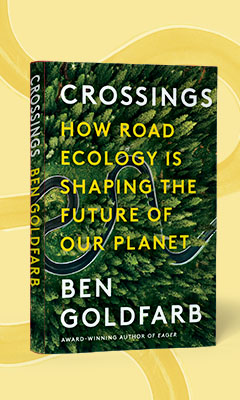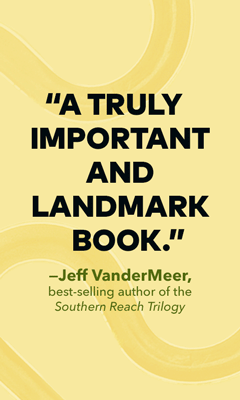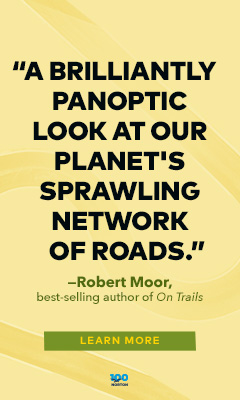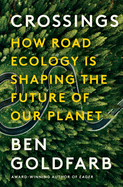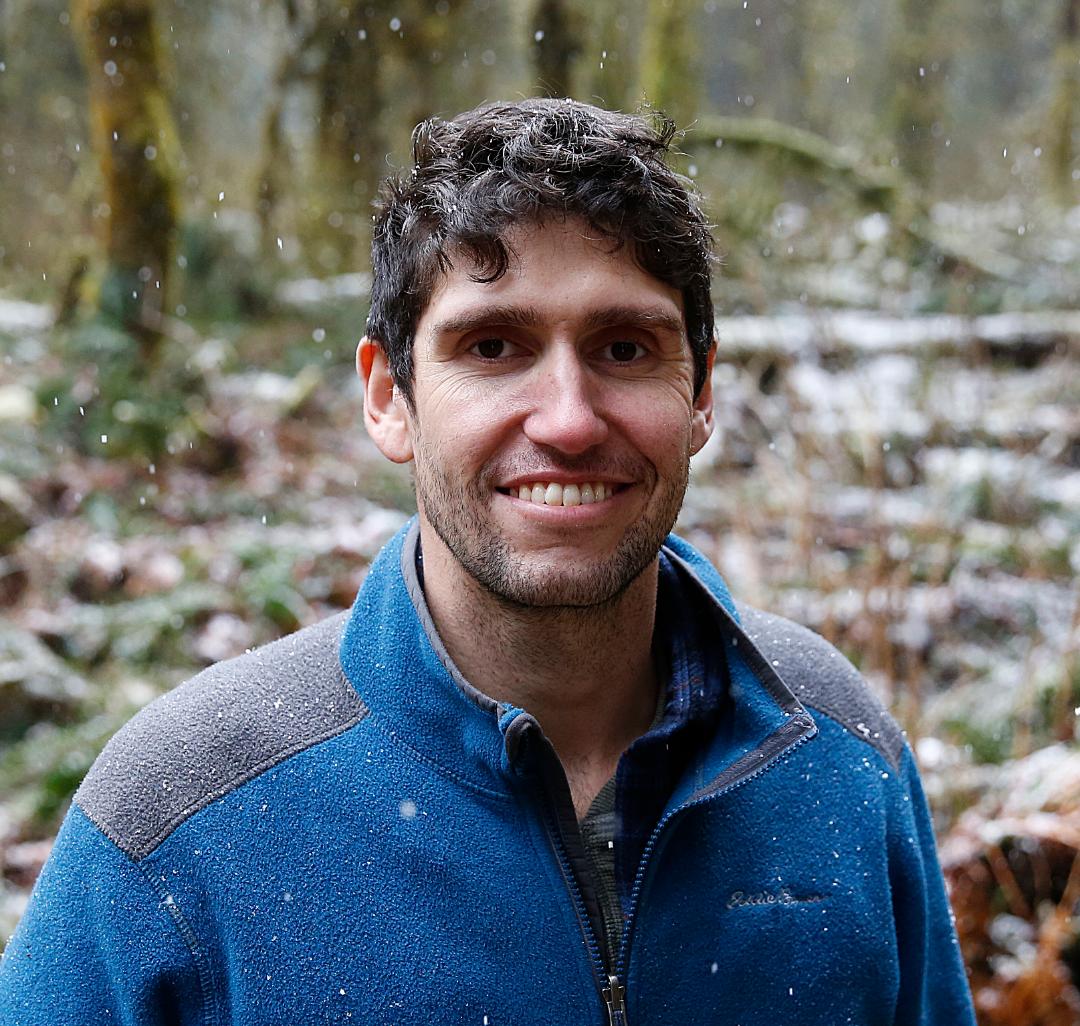Crossings: How Road Ecology Is Shaping the Future of Our Planet
by Ben Goldfarb
In today's world of competing environmental urgencies, it's difficult to assess books touted as "timely" or "necessary." Readers may rightly ask: "Aren't they all?" But journalist Ben Goldfarb's Crossings: How Road Ecology Is Shaping the Future of Our Planet is truly one of the defining books of the environmental canon, calling attention to a hugely important and all-too-easily ignored issue. Called "a marvel" by the Whiting Foundation, Crossings defines road ecology and explains why we should care.
By now, most people are aware of the damaging impact humans have had on the Earth and its climate; however, the profligate network of roads is one of the least studied factors and most detrimental to humans and non-humans alike. Road ecology is a relatively new discipline, its name coined by landscape ecologist Richard Forman in 1993 and "defined loosely as the study of how 'life change[s] for plants and animals with a road and traffic nearby.'" As it turns out, those changes can be dramatic. From the rapid evolution of wing structures of cliff swallows to the migration of salmon populations, Goldfarb (Eager) details the improbable but undeniable impacts of roads and traffic on every living thing.
Crossings is divided into three sections, followed by an epilogue ("The Anthropause") and a detailed notes section and index. Its organization contributes to the effectiveness of the book, starting from the most dismal details in Part I: "Killer on the Road." This section focuses on the deleterious effects of cars and roads, with abundant attention paid to roadkill, failed animal migrations, and species decline due to isolation, with the notable example of P-22, a male mountain lion that somehow survived for a decade in an eight-square-mile island of habitat bounded by the freeways of Los Angeles. These discouraging narratives are softened by the work of road ecologists, especially those working to build wildlife crossings. Goldfarb's comprehensive research provides numerous examples of the effectiveness of these accommodations, noting that "the tweaks varied, but the big picture didn't: where crossings and fences went in, crashes ceased and migrations continued."
Part II ("More Than a Road") focuses on more abstract or indirect effects, including a fascinating look at the U.S. Forest Service and its 370,000 miles of roads, many of which have fallen into serious disrepair. Goldfarb describes them as "half-forgotten artifacts that reveal cultural values, reminders of who we are and who we were." Hungry for timber to fuel the postwar housing boom, enterprising logging companies used forest roads to take them directly to harvest sites. That kind of access to public lands wasn't prohibited until 1964, when the Wilderness Act was passed, designating wilderness as "any roadless block of public land that measured at least five thousand contiguous acres." Goldfarb explains that anti-road activists like Aldo Leopold were primarily concerned with how roads affected the human experience in nature rather than their effect on animals. Several decades later, the Forest Service put all the pieces together and began work to undo the damage, starting by destroying some 3,500 miles of logging roads. Studies confirm that the results have been remarkable: "Roadless areas are planetary buffers against extinction: a species that resides within a wilderness is more than twice as likely to survive as one in the hellscape beyond." Besides the obvious impacts on wildlife, the road decommissioning project has been beneficial to local communities, too, providing jobs to working families in the region.
A book like this is always a balancing act, with an author required to walk a narrow path between telling the difficult truths and fostering hope and encouraging action. Goldfarb's tone is light and full of unexpected humor, perfect for accomplishing such a balance. At times, his words seem to be barely suppressing a grin--but not at his subject's expense. Readers never lose track of how serious the issue is, even as they find themselves laughing at a sentence like, "In Wisconsin deerkills quadrupled in a decade; even Joseph McCarthy hit a deer, which he presumably suspected of being a Communist saboteur." With this signature wit, Goldfarb performs a monumental task, detailing the harm already done while pointing toward a way ahead.
Though Goldfarb's argument in Crossings is clear, he draws upon his journalistic objectivity, openly stating his reluctance "to unilaterally pillory roads' defenders." Instead, he acknowledges the practical limitations of a roadless utopia, while insisting that "Using the right roads has never precluded destroying the wrong ones." One of those wrong roads is I-81 in Syracuse, N.Y.--among the many interstates built to destroy Black communities in the 1960s. In Part III ("The Roads Ahead"), Goldfarb points to the interstate viaduct in Syracuse as an example of how damaged communities might be repaired by the removal of highways and a re-envisioning of public spaces in favor of pedestrian traffic. Plans are ongoing in Syracuse, and the city has a chance to remake itself in the absence of the viaduct bisecting it; with those plans comes a great deal of hope. Crossings is ultimately an optimistic book; whether choosing to drive less or work for greater systemic change, readers will be inspired to act, imagining a possible future where cars and the roads on which we drive them no longer dominate every landscape. --Sara Beth West



